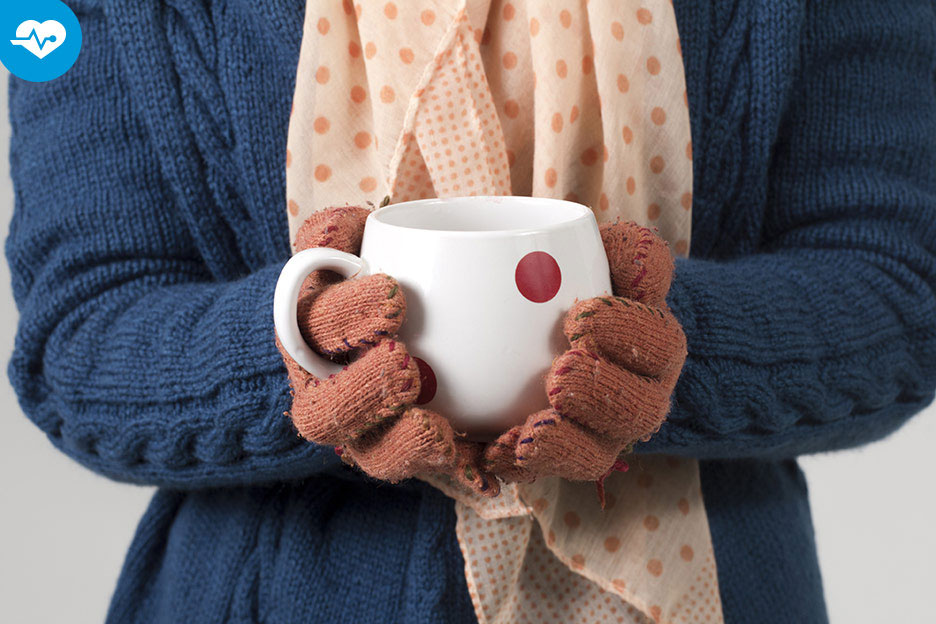Oh what fun to go outside and play after a storm or take a walk as big snowflakes tickle your nose. No matter how anxious you are to get outside, take the time to dress warmly and read the following to avoid the pain and inconvenience caused by frostbite.

1
What causes frostbite?
When it gets cold, our body saves heat to protect vital organs by reducing the amount of blood sent to the extremities. Our fingers, toes and nose get less blood and are therefore prone to frostbite.
2
How to spot signs of frostbite?
The first signs of frostbite include redness, swelling, pain and a tingling feeling in the extremities. Next, if the skin is not warmed, its colour can change from red to grey to a waxy white and lose all feeling, indicating a very severe case of frostbite.
3
What to do in case of frostbite?
Follow these steps if you or a loved one experience pain when coming in from the cold:
- remove clothing from the affected area;
- slowly warm the area by using your breath, covering it with your hands, wrapping it in a piece of warm clothing or placing it in warm water. If it is a hand, it can help to place it under your armpit or between your thighs.
Never rub the area or try to warm it by placing it near a source of heat like a hair dryer or a heating pad. Never plunge the affected area in hot water.
It is vital to act quickly because if left unattended, frostbite can cause tissue damage and, in the most severe cases, lead to amputation.
4
When to see a doctor?
Seek medical attention immediately if:
- the affected area is still frozen after 30 minutes;
- pain remains intense and persistent;
- the frostbite gets extensive;
- blisters form on the skin;
- skin turns blue or blackish.
5
How to prevent frostbite on our little ones?
When dressing children for outdoor play in cold weather, remember to put on:
- several layers of warm clothing;
- a waterproof and cold-resistant snowsuit;
- a warm tuque and neck warmer;
- mitts that fit just right—not too big and not too tight. Mitts need to be changed as soon as they get wet as humidity causes loss of heat.
Make sure children don’t stay outside too long in very cold weather. With their smaller muscle mass, children produce less heat than adults, making them more vulnerable to cold. And because babies tend to lose their heat very quickly, it is especially important to be on the lookout for any signs of discomfort.
Beware of frostbite’s two accomplices
Wind
Even in milder temperatures, wind can increase the risk of frostbite due to its cooling effect, otherwise known as the wind chill factor.
Baby Carriers
It is not recommended to practice sports with a child strapped in a carrier. In this position, children are more vulnerable to wind and cold and at greater risk for frostbite or hypothermia. Also, falling while practicing winter sports such as downhill skiing, skating or even cross-country skiing can cause severe injuries to your little ones.
